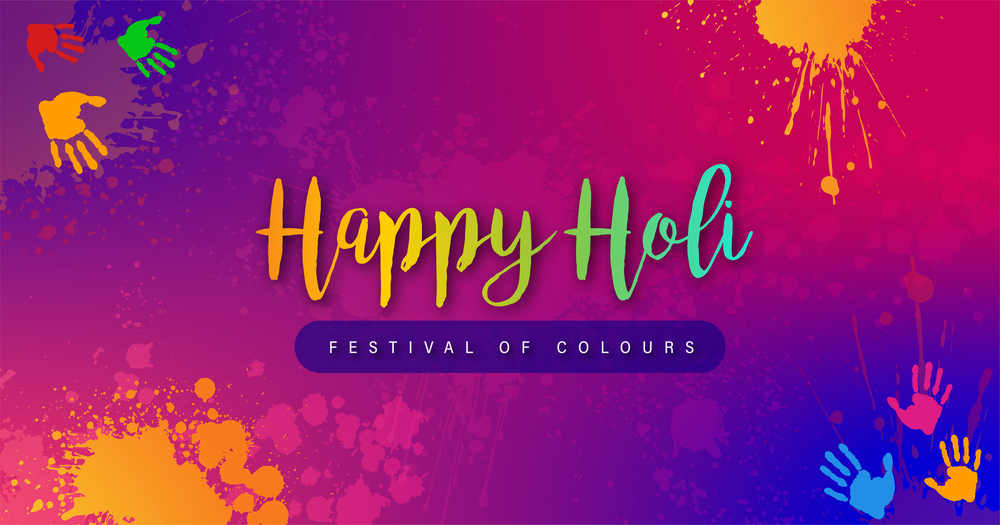FAQ’s – Holi Festival 2023

Q1. Why is Holi celebrated?
It’s said that the Holi Festival was originally a ceremony for married women to spread prosperity and goodwill on their new family. Since then, the festival has evolved to encompass much more. Now, one of the main focuses of the Holi Festival is a celebration of the victory of good over evil.
Q2. What is Holi and how is it celebrated?
Often referred to as the festival of colour, Holi is a boisterous occasion, characterised by family and friends daubing coloured powders over each other and drenching unsuspecting passers-by with a deluge of water. Everyone is fair game for fun and a little flirtation in the spring sunshine.
Q3. What is the tradition of Holi?
This ancient tradition marks the end of winter and honors the triumph of good over evil. Celebrants light bonfires, throw colorful powder called gulal, eat sweets, and dance to traditional folk music. A man, covered in the bright colors of Holi, showers the crowd with a handful of red powder during the festivities.
Q4. What food is eaten on Holi?
- Gujiya
- Thandai
- Lassi
- Rasmalai
- Malpua
- Barfi
- Badam phirni
- Dahi bhalla/Dahi vada
Q5. What is the short story of Holi?
Holi gets its name from Holika, demon king Hiranyakashyap’s sister. Hiranyakashyap had got a boon from Lord Vishnu that he would not be killed by man or animal, at day or night, inside or outside, above or on the ground. So Hiranyakashyap said that only he should be worshipped, not God.
Q6. What colours are used for Holi?
People use vibrant colors of the rainbow to express love, emotions, happiness, and best wishes, which also reflect the cultural variety of India. The most popular colors used in Holi are red, yellow, blue, green, pink, orange or saffron, and purple.
Q7. Why is Holi celebrated with colors?
‘Holi’ marks the onset of Spring. Throwing of colours to each other is the signature of this festival. Therefore, it is often referred to as the Festival of Colours. Mythologically, Holi is associated with the legend of the demon King Hiranyakashyap and his son Prahlad and sister Holika .
Q8. How to make natural Holi colors?
- Yellow: You can mix gram flour and turmeric in the ratio of 1:2 for yellow colour. Make sure to rub the mixture between your palms so that they are mixed evenly. …
- Red: You can mix lemon juice in turmeric. …
- Magenta: You can cut beetroot slices and boil them in water.
Q9. Why is the festival of colors important?
Holi represents the arrival of spring and the triumph of good over evil. It is also said to be the enactment of a game the Hindu god Lord Krishna played with his consort Radha and the gopis, or milkmaids.
Q10. What is Holi color powder called?
Gulal is the original name given to the coloured powder used during Hindu celebrations and religious rituals as well as during Holi, the Festival of Colours.
Q11. Is Holi powder safe to eat?
Our Color Dust is non-toxic, 100% safe and biodegradable. It is not meant for consumption, so you’ll want to keep our color dust out of the eyes and lungs.
Q12. Is Holi dye safe?
Part of the celebration is throwing brightly colored powders into the air and onto others. These powders should be from safe and natural sources, but some contain metals and other potentially dangerous substances. Safely enjoy your Holi celebrations by covering your skin, eyes, nose, and mouth.
Q13. Is Color Run bad for lungs?
Since the Color Run uses much more powder, the risk is similar to a workplace illness called “baker’s asthma.” Occupational hazard studies show individuals who inhale nontoxic powders can suffer respiratory failure, collapsed lungs, and even COPD.
Q14. What are the items used for Holi?
No Holi is complete without the celebration called thandai. Usually made with milk, almonds, watermelon seeds, fennel seeds, pepper corn, rose petals, cardamom, khus seeds, saffron and sugar.
Q15. What is Holi powder made of?
Another worrying aspect of the practice is the high exposure of lungs to dust at events involving Holi color powder. The powder is usually made on the basis of talc, corn flour (cornstarch) or rice flour.
Q16. What are some Holi decorations?
- Corners with Bright Colour Flower Vases
- Flowers: Colours with Fragrances
- Beautiful Balloons for Entrance
- Coloured Pattern for Cushions & Curtains
- Colourful Lights
- Creative Rangoli with Vibrant Colors
- Artistic Colourful Wall Hangings
- Convert an Empty Space into Home Bar
Q17. What games can we play on Holi?
- Bucket Blast – Family Holi Game. This interesting game from Popxo, involves getting all wet
- Rainbow Rain Dance
- Water Gun
- Bubble Play
- Dancing Colours
- Toothbrush Painting
- Make Organic Colors
Q18. How do you play Holi party?
On the day of Holi, families and friends gather in their backyards, terraces, neighborhoods, or driveways (like us) to play Holi with brightly colored powders to throw and smear on clothes and faces. The celebration brings in mesmerizing hues of blues, yellows, magentas, greens, violets, and more.
Q19. What are some Holi traditions?
Celebrants light bonfires, throw colorful powder called gulal, eat sweets, and dance to traditional folk music. A man, covered in the bright colors of Holi, showers the crowd with a handful of red powder during the festivities.
Q20. How to play Holi without water?
The festival can be celebrated by greeting each other with love and applying a simple tilak of organic color on the forehead. These dry natural and organic colors could be erased without water, and your clothes wouldn’t get spoiled too.
